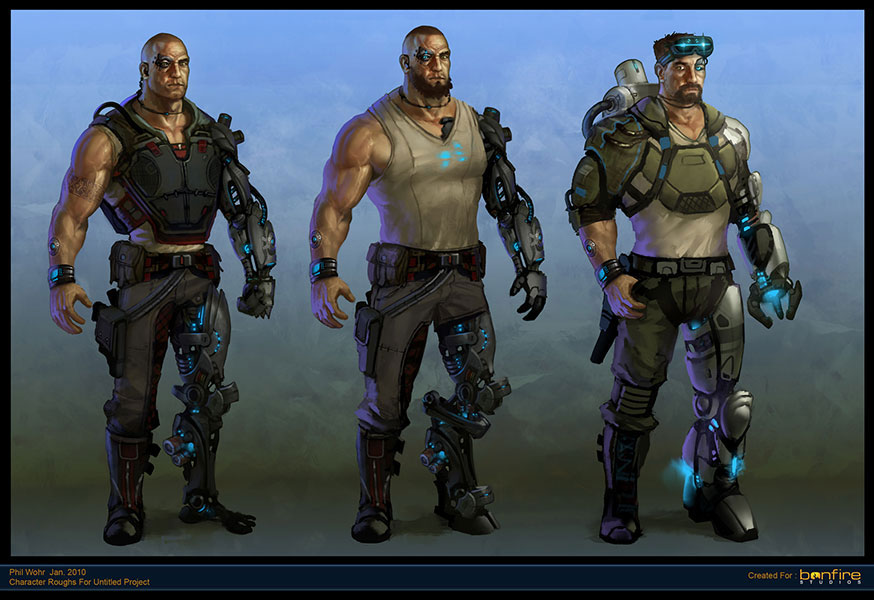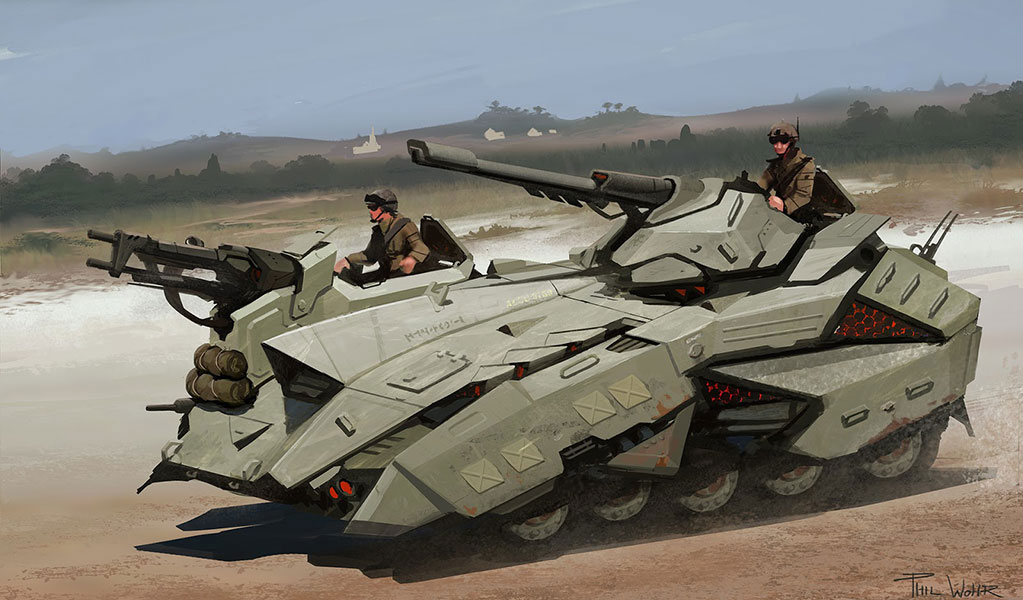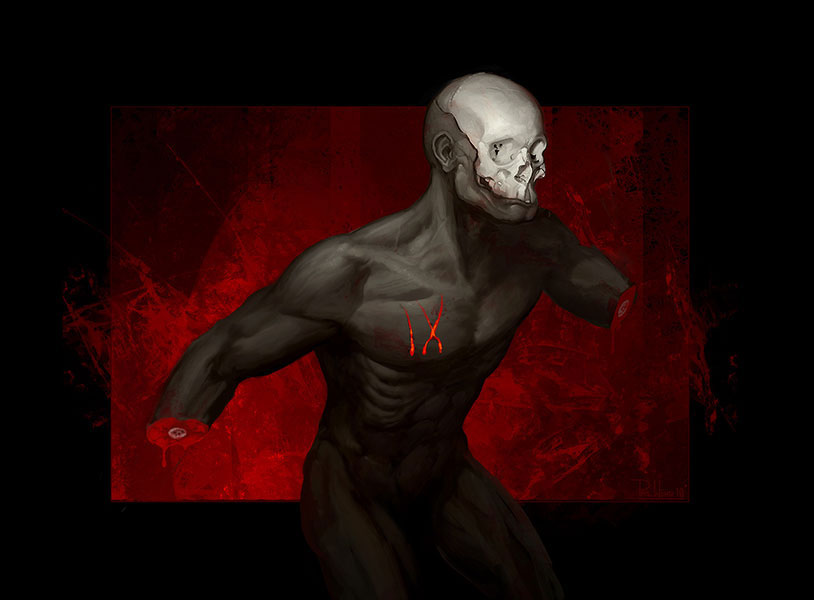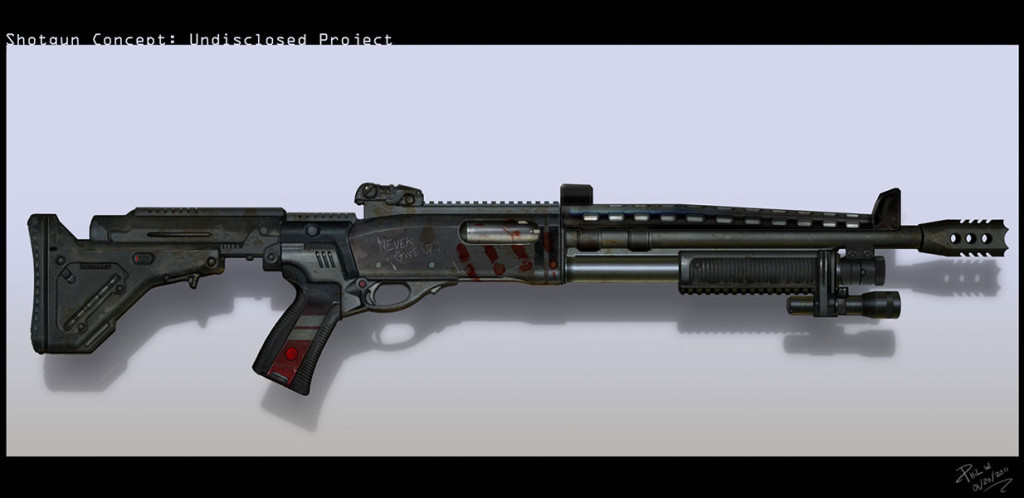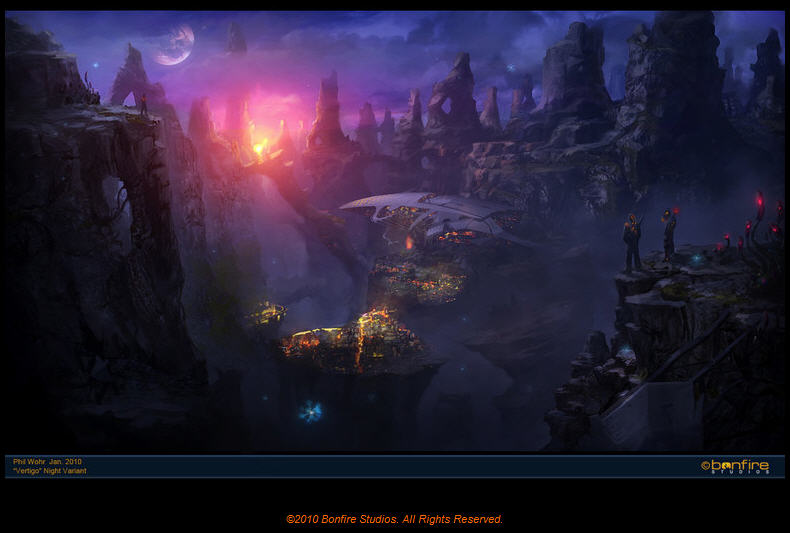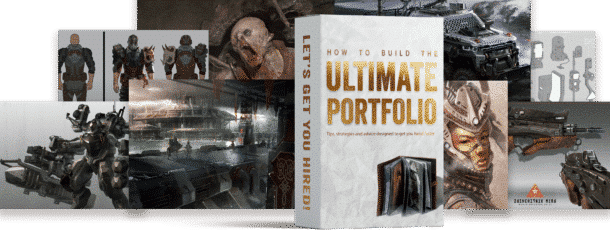PHIL WOHR IS A PROFESSIONAL CONCEPT ARTIST WITH OVER A DECADE OF EXPERIENCE WORKING IN THE VIDEO GAMES INDUSTRY.
Website
http://artofphilwohr.blogspot.com/
Phil Wohr’s current portfolio examples
If you haven’t already, be sure to check out Part 1 and Part 2 of this interview, where we asked him specific questions about what it’s like to be a concept artist in the entertainment industry, dispel a few common misconceptions that aspiring artists tend to have about the field, and discuss his educational background. Here, in part two of this interview, we ask Phil Wohr specific questions about building his portfolio, marketing himself in the industry and more. Here’s what Phil Wohr had to say:
WHAT ARE YOUR LIST OF DOS AND DON’TS TO BUILDING A STRONG PORTFOLIO?
When building a portfolio it is important to show your strengths and your range. It is equally important to remove weaker pieces that no longer represent your abilities.
Also tailoring a portfolio towards a specific position can be helpful. Most of these companies like to see that you already have pieces in your portfolio that would be acceptable as concepts in their game, or are at least close. So, for example, if you want to work for a company that does cartoony style stuff, your portfolio should have at least some of that in it. Have others look at your portfolio and help you decide what pieces are bringing it down. It’s much better to have a portfolio with 20 strong pieces than one with 20 plus 5 pieces that aren’t as good. Those weaker pieces will make people think that you are at a lower overall skill level. Also, even if you have 100 strong pieces, try to bring it down to a manageable number so the other person can get through it. If there are too many, they’ll probably only look at half of them and those might not be the strongest ones.
IF YOU COULD GO BACK AND RE-EVALUATE YOUR OWN GRADUATING PORTFOLIO, HOW WOULD YOU DO? WHAT DO YOU THINK MADE YOUR PORTFOLIO STAND OUT? WHAT COULD HAVE BEEN DONE BETTER?.
I probably had more work than I needed in some areas, I think I might reduce the total number of pieces in favor of a more concise read.
From what I was told at the time, my portfolio stood out as being fairly “broad” in terms of showing characters, vehicles, weapons, environments while still maintaining quality.
Looking back, my environments could have been a lot stronger, but you really can’t expect to be a master of all things, especially fresh out of school — and for me a 2 year school.
HOW DID YOU HUNT DOWN YOUR FIRST JOBS IN THE INDUSTRY? FRIEND/ WORD OF MOUTH/ REFERRAL? DID YOU APPLY ONLINE THROUGH THE COMPANY? ON A JOB FORUM/ HEAD HUNTER/ ETC.
My first job in the industry was at TKO Software in the Dallas area. I got the job because one of the artists there was a former art institute graduate who would watch the forums. At the time, he was impressed with my ability to create concept art and also 3D art at a reasonably high level for a student.
HOW DID YOU MARKET YOURSELF COMING OUT OF COLLEGE/ FIRST STARTING OUT? WHAT DIFFICULTIES DID YOU HAVE TO OVERCOME?
I probably didn’t do a great job of marketing myself because I was already interning at TKO before I got out of school. I really didn’t surmount any major marketing difficulties as I got really lucky getting picked up so early.
I will offer this piece of advice for students:
When presenting art, especially with physical, printed portfolio; neatness is important. You don’t want an employer opening your portfolio and it looks all sloppy with a bunch of notes and crap falling out. When you are making a piece of art, think about how it will look in a portfolio. As you finish each piece, try to make it presentation worthy by giving the image a label and a simple background. This helps sell your work as a “professional” and will save you a bit of headache later.
WHERE DO YOU CURRENTLY MARKET YOURSELF? WHAT GIVES YOU THE MOST RETURN ON YOUR INVESTMENT (YOUR WEBSITE, SOCIAL MEDIA, WORD OF MOUTH?, ETC.)
I really don’t market myself a whole lot. I have a free blogspot account that gets a fair amount of attention. If you google my name it is the first thing that comes up and I think working on projects like borderlands and halo wars that people actually were searching for helped. I’ve found that once you get out of school, the projects you work on tend to draw their own attention as long as there is a place where people can search for related art.
When I’m looking for work though, I rely mostly on word of mouth and “who you know”. Almost every job I’ve gotten after Gearbox was through knowing someone and having an “in” at the company.
The industry is super small, so once you’ve been in it a while, the people who you’ve worked with tend to move around, and next thing you know you have 1st and 2nd party connections all over the place.
It can work in reverse if you upset people or are hard to work with, so play nice and check your ego at the door.
DO YOU THINK THE INDUSTRY IS VEERING TOWARDS A MORE CONTRACT AND OUTSOURCING MODEL FOR ARTISTS?
I think it will always be more or less half and half. I believe there will be a continued trend of large studios “ballooning up” to meet ship dates, and then shrinking back down once the project has shipped. I think outsourcing and freelancing fills those needs without forcing companies to make big hires and then big layoffs.
Personally, I still prefer having a salaried position to pure freelance. I might take the occasional side job, but I try to avoid larger commitments because I like to have time for personal work.
This concludes our interview with Phil Wohr. if you woudl like to read more, check out Phil’s Words Of Wisdom. All images used with permission by the artist. ©Phil Wohr

